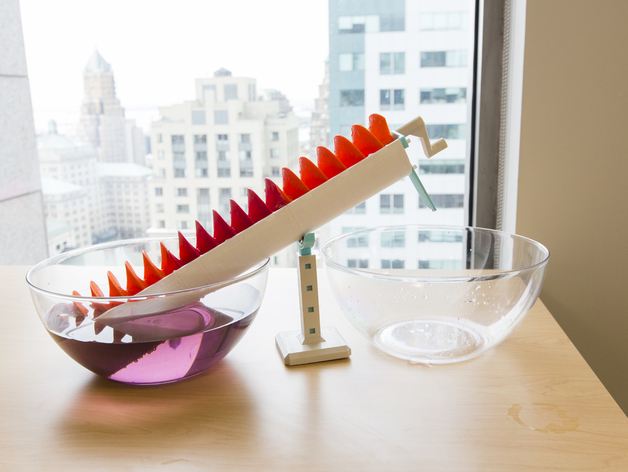3D printing is a relatively new technology in schools. We know that 3D printers produce fumes and smells into the air during printing but how much do we know about the potential health risks associated with 3D printing?
3D printers release a variety of Volatile Organic Compounds (VOCs) and Ultra Fine Particles (UFPs) into the air during the heating of the print filament. Two of the most common filament types are:
- ABS (Acrylonitrile Butadiene Styrene), a petroleum-based material.
- PLA (PolyLactic Acid) which is derived from corn starch.
Others include: TPU (Thermoplastic polyurethane), an extremely flexible polyurethane based plastic, Carbon filament, Grass filament, Metal filament, Hemp filament and Beer filament.
Volatile Organic Compounds. “VOCs are a group of carbon-based chemicals that easily evaporate at room temperature. Many common household materials and products, such as paints and cleaning products, give off VOCs. Common VOCs include acetone, benzene, ethylene glycol, formaldehyde, methylene chloride, perchloroethylene, toluene and xylene.” Australia – state of the environment.
All filaments produce VOCs and UFPs. The amount and type is determined by the filament used and to a much lesser extent the type of printer used. ABS releases more toxic VOCs including styrene and formaldehyde, the first a suspected human carcinogen and the second a known one. Polylactic acid (PLA) is a corn-based plastic found in medical implants, drinking cups, and disposable diapers and emits methyl methacrylate, a mild skin irritant.
While PLA is considered a safer product than ABS, additives applied to PLA filaments to increase things like shine and electrical conductivity can change emissions significantly. It is also important to note that HEPA filters do not filter VOCs effectively or at all, only UFPs.
All filament types emit UFPs which are small enough to get into the lungs and blood stream and have been linked with respiratory and cardiovascular disease. A study by the Environmental, Science and Technology Journal showed that the highest UFP rates occurred with ABS filament and the lowest emissions with PLA.
At PBAS we use PLA filament and have 1 UP Box+ and 2 UP Mini printers which are in an enclosed space approximately 4m by 2.8m. This room has an air circulation vent and air conditioning system but no dedicated fume extraction system. All our printers are fully enclosed with HEPA filters that assist in reducing UFPs. Recent testing by the Built Environment Research Group at the Illinois Institute of Technology said the following about the UP Box+ enclosed filtering system:
- Having an enclosed box reduced UFPs by 74% with no filter operating.
- Having an enclosed box with the HEPA filter operating reduced UFPs by 91%.
- Testing with the HEPA filter turned on also suggested some reduction in VOCs but was not conclusive.
While the longer term impacts of 3D printing in spaces like offices, schools and home environments are not fully known there are some things that can be taken from the current research:
- Print in a well ventilated space.
- Do not stay in the same space as the 3D printer for extended periods of time while it is printing.
- ABS filaments emit known carcinogenic chemicals.
- Use PLA filament.
- Use printers that are fully enclosed and include HEPA filters.
If you use 3D printers now, or are considering their use in the future then it is important to consider how you can reduce any potential health risks to yourself and your students.
Sources
WHAT TEACHERS NEED TO KNOW ABOUT SAFETY AND AIR FILTERS RE: 3D PRINTERS IN SCHOOLS
Volatile Organic Compounds Ambient Air Quality 2016
New 3D printer test: Up Box+ Printer with HEPA filter















